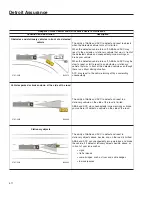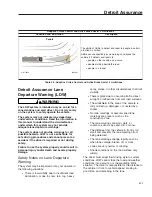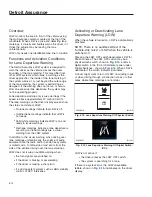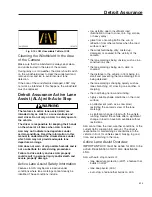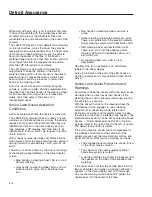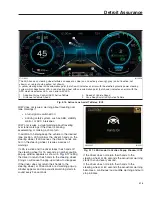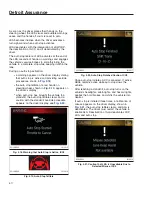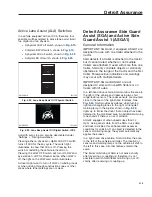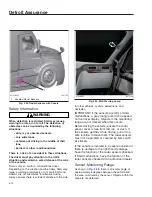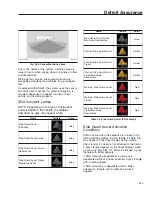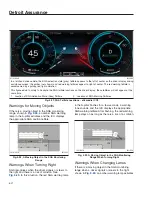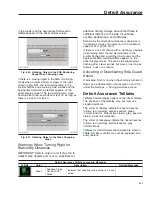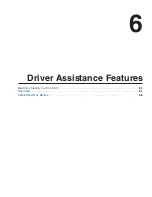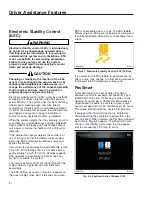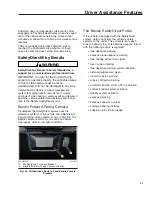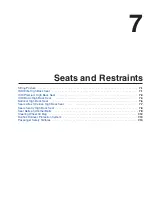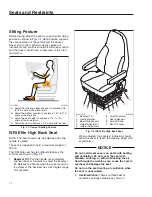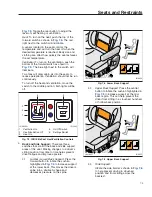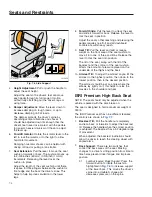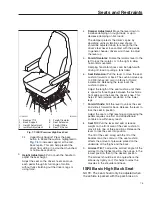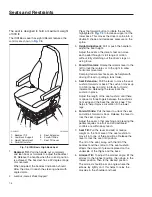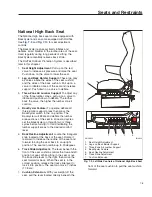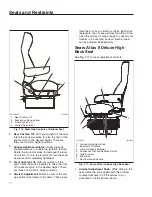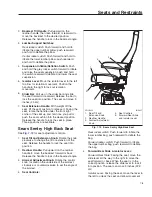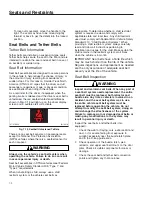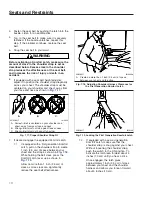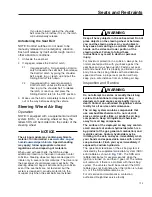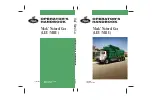
Electronic Stability Control
(ESC)
WARNING
Electronic stability control (ESC) is intended only
as an aid for a conscientious and alert driver.
Carefully read the information in this manual to
understand this system and its limitations. ESC
is not a substitute for safe driving procedures.
Failure to drive safely, and use the system
properly, could result in personal injury and/or
death and property damage.
CAUTION
Changing or modifying the location of the ESC
sensor or reconfiguring the vehicle, such as by
changing the wheelbase or adding axles, can
change the performance of the enhanced stability
control system and may result in product or
property damage and personal injury.
Electronic stability control (ESC) works by constantly
comparing the driver’s intention with the vehicle’s
actual behavior. The system does this by monitoring
wheel speed, steering angle, yaw rate, lateral
acceleration, throttle position, and brake application.
A central microcomputer analyzes the collected data
and triggers a response to keep the vehicle on
course when an unstable condition is detected.
When the system detects that the vehicle is at risk of
over-steering or under-steering, it applies individual
tractor wheel end brakes and trailer brakes and/or
cuts power to reduce the likelihood of a drift-out or
jackknife.
If the acceleration sensor detects the vehicle is at
risk of rolling over, the roll stability control system
within the ESC automatically reduces power and
applies the brakes.
Yaw control is not active below approximately 6 mph
(10 km/h). Roll stability control is not active below
approximately 12 mph (20 km/h). At higher speeds,
ESC operates automatically; the driver does not
monitor or activate the system.
The driver has full control over the vehicle until the
system detects a potential risk and intervenes
accordingly.
The ESC telltale, as shown in
appears on
the driver display when ESC intervenes and when
ESC is unavailable due to a fault. The ESC telltale
flashes when an ESC event is actively occurring and
is solidly illuminated when ESC is unavailable due to
a fault.
It is normal for the ESC telltale to illuminate shortly
after a curve, lane change, or other driving maneuver
that results in ESC detecting a rollover-risk.
PasSmart
A standard feature on fleet vehicles, PasSmart
enables a vehicle to exceed a set speed limit by a
limited amount to allow for passing vehicles on the
highway. For example, a PasSmart vehicle may be
programmed to enable the vehicle to travel 5mph
over a set speed limit for 30 minutes every 24 hours.
This speed limiting increases overall fuel economy.
If equipped, the PasSmart function is initiated by
double-pumping the accelerator pedal within a two
second period. When initiated, the PasSmart window
as shown in
appears. The PasSmart timer
shown in this window starts when the road speed
limit is exceeded by 1.89 mph (3 km/h).
f612013
03/09/2022
Fig. 6.1, Electronic Stability Control (ESC) Telltale
f612010
03/09/2022
Fig. 6.2, PasSmart Active Window, ICC5
Driver Assistance Features
6.1
Summary of Contents for PX113064S T 2016
Page 4: ......
Page 10: ......
Page 18: ......
Page 58: ......
Page 86: ......
Page 112: ......
Page 122: ......
Page 142: ......
Page 154: ......
Page 155: ...12 Steering System Power Steering System 12 1...
Page 158: ......
Page 159: ...13 eAxle eAxle 2 Speed Transmission 13 1...
Page 176: ......
Page 190: ......
Page 202: ......
Page 222: ......
Page 223: ...20 Emissions Information Noise Emissions 20 1 Greenhouse Gas Emissions 20 1...
Page 229: ......
Page 236: ......

